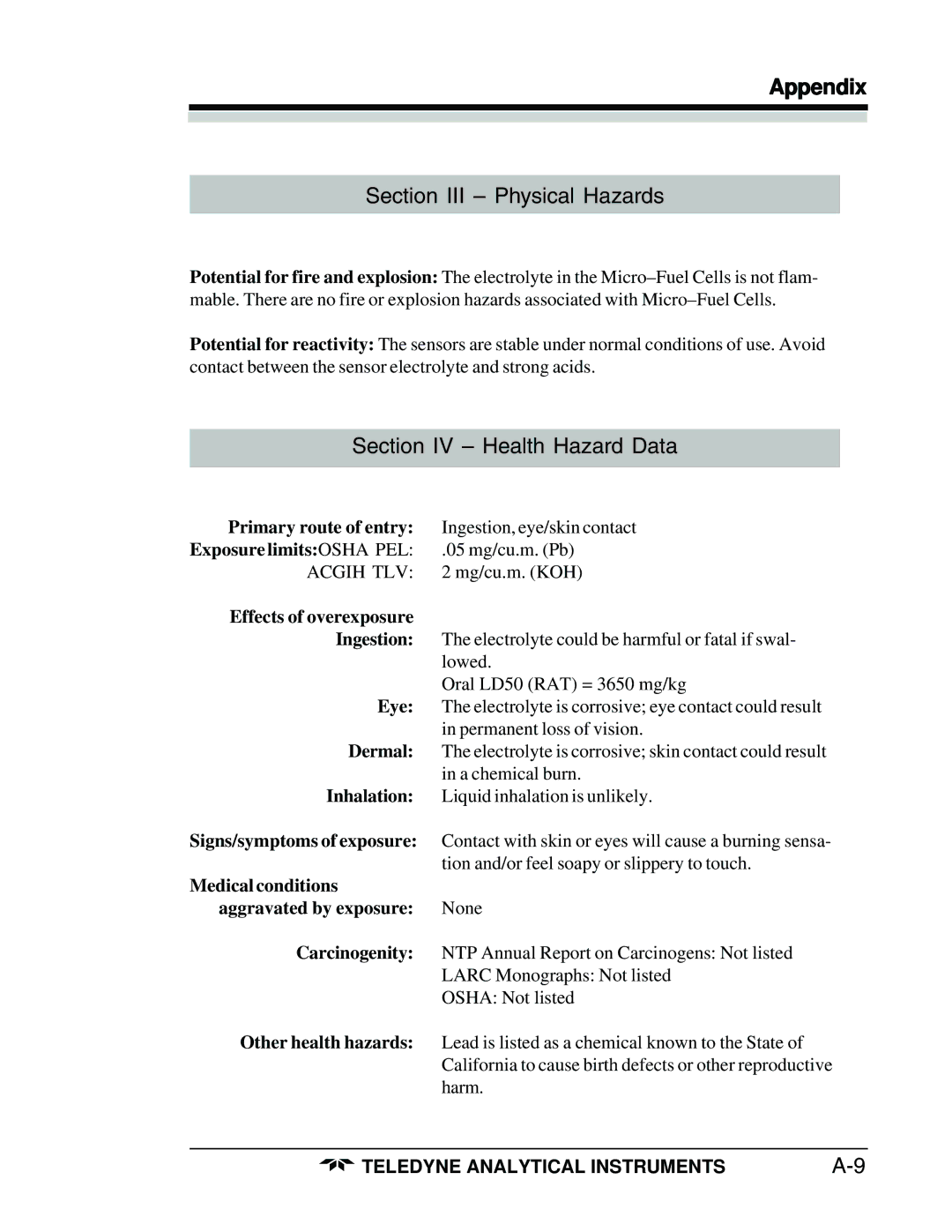
Appendix
Section III – Physical Hazards
Potential for fire and explosion: The electrolyte in the
Potential for reactivity: The sensors are stable under normal conditions of use. Avoid contact between the sensor electrolyte and strong acids.
Section IV – Health Hazard Data
Primary route of entry: | Ingestion, eye/skin contact |
Exposure limits:OSHA PEL: | .05 mg/cu.m. (Pb) |
ACGIH TLV: | 2 mg/cu.m. (KOH) |
Effects of overexposure |
|
Ingestion: | The electrolyte could be harmful or fatal if swal- |
| lowed. |
| Oral LD50 (RAT) = 3650 mg/kg |
Eye: | The electrolyte is corrosive; eye contact could result |
| in permanent loss of vision. |
Dermal: | The electrolyte is corrosive; skin contact could result |
| in a chemical burn. |
Inhalation: | Liquid inhalation is unlikely. |
Signs/symptoms of exposure: | Contact with skin or eyes will cause a burning sensa- |
| tion and/or feel soapy or slippery to touch. |
Medical conditions |
|
aggravated by exposure: | None |
Carcinogenity: | NTP Annual Report on Carcinogens: Not listed |
| LARC Monographs: Not listed |
| OSHA: Not listed |
Other health hazards: | Lead is listed as a chemical known to the State of |
| California to cause birth defects or other reproductive |
| harm. |
TELEDYNE ANALYTICAL INSTRUMENTS |
